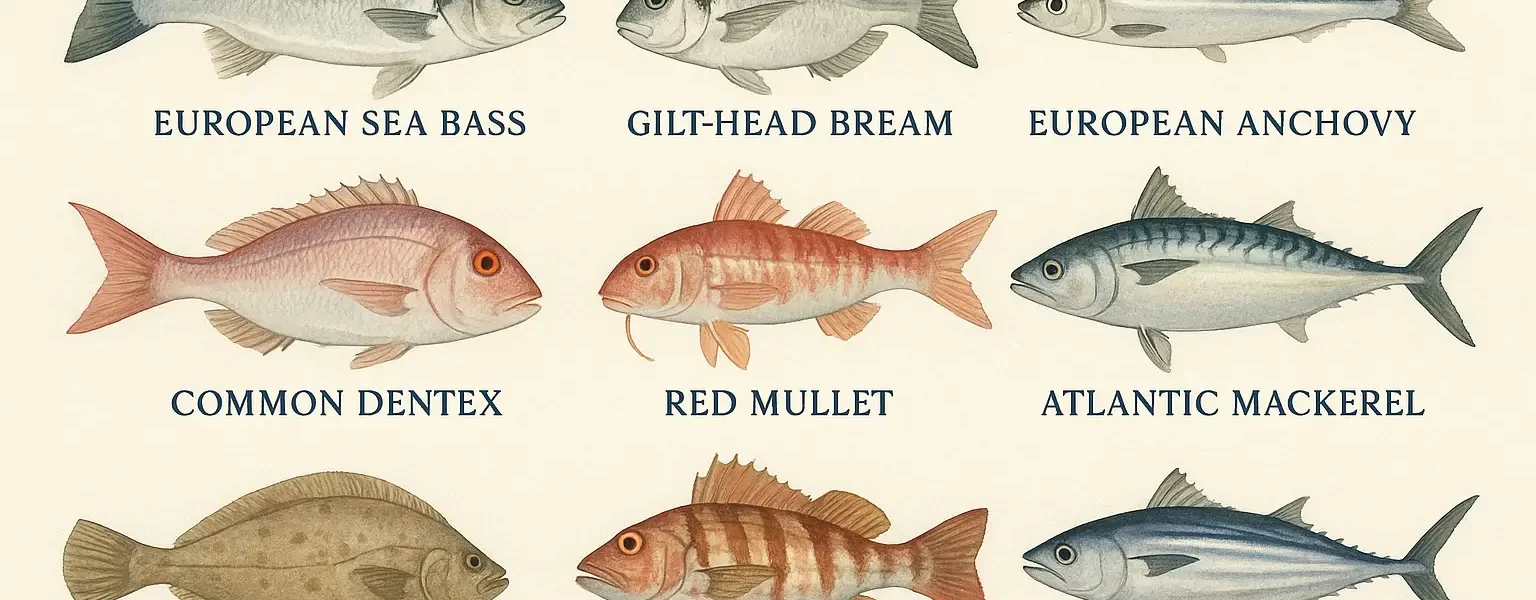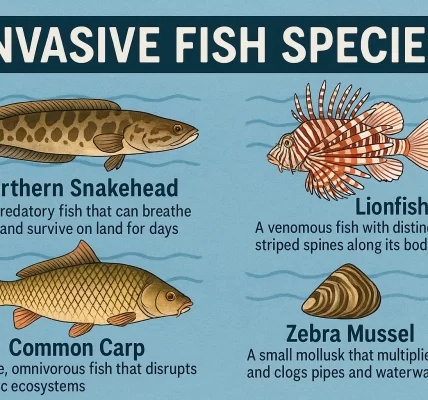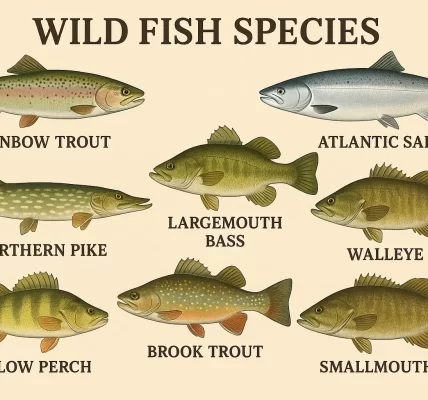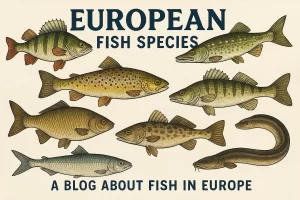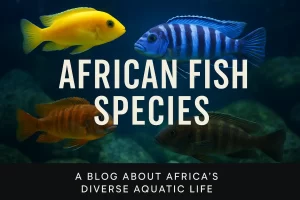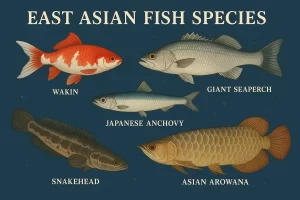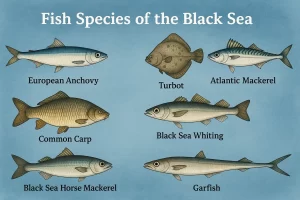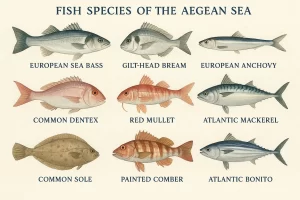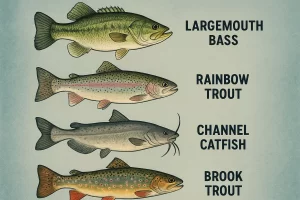Fish Species of the Aegean Sea
Fish Species of the Aegean Sea: A Guide to the Marine Biodiversity of the Eastern Mediterranean
The Aegean Sea, nestled between Greece and Turkey, is a vital part of the Eastern Mediterranean ecosystem. Known for its crystal-clear waters, rugged coastline, and deep cultural heritage, the Aegean is also home to a rich variety of fish species that sustain both local fisheries and marine biodiversity.
Why the Aegean Sea is Unique
The Aegean Sea has a complex underwater geography, featuring numerous islands, submerged valleys, and rich coral habitats. Its connection to both the Mediterranean and the Black Sea gives it a dynamic mix of species and water conditions, making it one of the most diverse marine environments in Europe.
Key Environmental Features
- Salinity: Approximately 38 PSU
- Temperature: Ranges from 14°C in winter to 25°C in summer
- Depth: Reaches over 1,000 meters in some parts
- High biodiversity due to warm currents and nutrient flow
Popular and Iconic Fish Species of the Aegean
1. Sea Bream (Sparus aurata)
Often referred to as “Gilt-head bream,” this fish is prized for its delicate flavor and is common in both wild and farmed varieties.
- Habitat: Rocky seabeds and coastal lagoons
- Commercial Importance: High—widely farmed in aquaculture
2. European Sea Bass (Dicentrarchus labrax)
One of the most sought-after fish in the region, the European sea bass is known for its firm white flesh and high nutritional value.
- Behavior: Predatory, often found near reefs
- Size: Can reach up to 1 meter in length
3. Red Mullet (Mullus barbatus)
A bottom-dwelling fish with a reddish-pink hue, red mullet is highly regarded in Mediterranean cuisine.
- Habitat: Sandy and muddy sea floors
- Distinctive Feature: Barbels under the mouth used to detect prey
4. Garfish (Belone belone)
This long, slender fish with a beak-like jaw is common in shallow coastal waters.
- Diet: Small fish and crustaceans
- Fun Fact: Its bones are green due to biliverdin pigment
5. John Dory (Zeus faber)
Although less common, John Dory is a delicacy in high-end cuisine. It has a flat body and a dark “eye spot” on each side.
- Habitat: Deeper, rocky areas
- Predatory: Yes, known to eat small schooling fish
Threats to Aegean Marine Life
While the Aegean remains biologically rich, several challenges threaten its delicate balance.
Overfishing
Intensive commercial fishing, including illegal trawling and unregulated harvesting, puts pressure on key fish populations like sea bass and red mullet.
Climate Change
Rising sea temperatures and changing currents alter fish migration and spawning patterns, affecting long-term sustainability.
Pollution
Plastics, chemicals, and untreated wastewater continue to affect coastal and open water ecosystems, particularly in areas near urban centers.
Conservation Efforts and Sustainable Practices
Governments, NGOs, and local communities have launched several initiatives aimed at protecting Aegean marine life.
Marine Protected Areas (MPAs)
- Designated zones where fishing is limited or banned
- Help restore fish stocks and protect spawning grounds
Responsible Fishing Initiatives
- Seasonal bans during breeding seasons
- Gear restrictions to prevent bycatch
Conclusion
The Aegean Sea is a treasure trove of marine biodiversity, offering both ecological value and economic opportunity. Understanding the region’s fish species—and protecting them through informed policies and sustainable practices—is key to preserving this unique ecosystem for generations to come. Whether you’re a marine biologist, seafood enthusiast, or simply curious about the ocean, the Aegean has a fascinating underwater world waiting to be explored.

